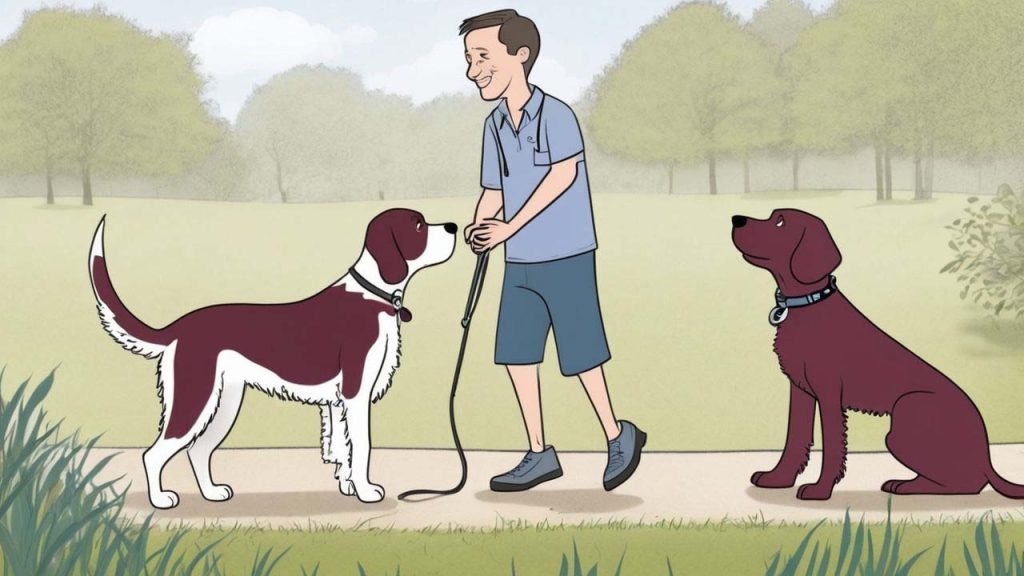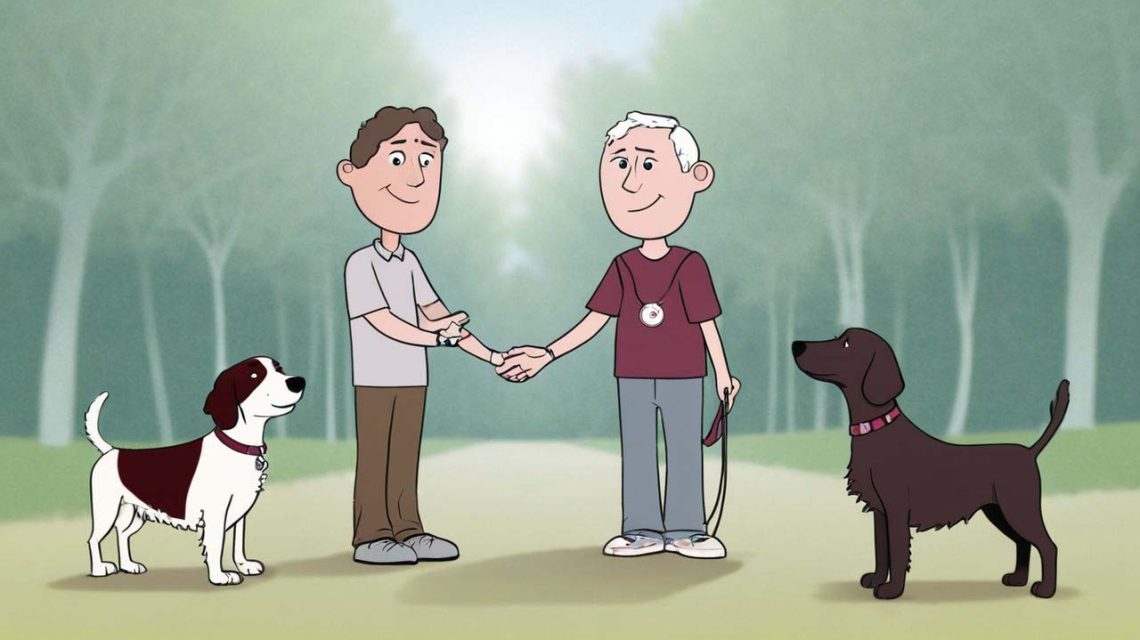Hearing dogs are specially trained service animals that bring freedom and independence to individuals with hearing impairments. From alerting their handlers to doorbells and smoke alarms to offering companionship, hearing dogs make everyday life safer and more accessible. In this guide, we’ll explore the vital role hearing dogs play, how they’re trained, and the profound impact they have on their handlers’ lives.
What Are Hearing Dogs and Why Are They Important?
Hearing dogs are service dogs trained specifically to assist people who are deaf or hard of hearing. Their purpose is to alert their handlers to important sounds, providing a sense of safety and independence.
Enhancing Safety and Independence
For those who can’t hear sounds in their environment, missing alarms, doorbells, or even a loved one’s voice can create significant challenges. Hearing dogs bridge that gap, making sure their handlers don’t miss critical alerts. By tapping their handler and guiding them toward the sound source, hearing dogs become an essential lifeline for communication and security.
Offering Emotional Support and Companionship
Beyond their service tasks, hearing dogs provide valuable companionship. They are a source of emotional support, reducing feelings of isolation and improving their handlers’ mental well-being.
The Role of Hearing Dogs in Daily Life
Hearing dogs play a versatile role in the daily lives of those with hearing impairments, from home to work and everywhere in between. Let’s look at some of the tasks that hearing dogs commonly perform.
Alerting to Alarms and Emergency Signals
One of the most crucial jobs a hearing dog has is alerting their handler to alarms, such as smoke detectors and emergency sirens. Hearing dogs are trained to respond quickly and guide their handler to safety when they hear these sounds.
Notifying Handlers of Doorbells and Phone Calls
Hearing dogs can alert their handlers to sounds like doorbells, knocking, or ringing phones. By nudging or pawing, they notify their handler and guide them to the sound, making communication easier and more reliable.
Responding to Everyday Sounds Like Names and Timers
Whether it’s their name being called, the microwave beeping, or a timer going off, hearing dogs can assist with these everyday sounds that many people take for granted. This allows their handler to remain focused on tasks without worrying about missing important cues.

How Hearing Dogs Are Trained
Training hearing dogs involves a rigorous and specialized process to ensure they can alert their handler to specific sounds. Not all dogs are suited for this role, and the training is designed to bring out the best in those with the right temperament and skills.
Selecting the Right Breeds for Hearing Dogs
Breeds with high intelligence, responsiveness, and a strong desire to work, such as Labradors, Golden Retrievers, and Poodles, are commonly selected as hearing dogs. These breeds are known for their adaptability, making them ideal companions for this role.
Sound-Specific Training: Alarms, Voices, and More
Training begins with teaching dogs to respond to sounds like fire alarms, phones, and doorbells. Trainers use positive reinforcement, such as treats and praise, to encourage alert behaviors when the dog hears these sounds. Over time, the dogs learn to respond quickly and guide their handler toward or away from the sound.
Training to Tap and Lead
Hearing dogs are taught specific behaviors to communicate with their handler. For example, when a phone rings, a hearing dog will gently tap their handler and guide them to the source of the sound. If the sound indicates danger, like a fire alarm, they’re trained to lead their handler to a safe location.
Building a Bond Between Hearing Dogs and Their Handlers
A strong bond between a hearing dog and their handler is critical for effective communication. This relationship goes beyond training and into daily life, where mutual trust and understanding make all the difference.
Establishing Trust and Understanding
Trust is essential for hearing dog teams. Handlers learn to recognize and respond to their dog’s alerts, while the dog learns to stay attentive to their handler’s needs. This reciprocal trust makes the partnership strong and dependable.
Communication Cues and Commands
Handlers use specific cues and commands to guide their hearing dog’s behavior. The dog learns these cues as part of their training, and with time, they begin to anticipate their handler’s needs based on cues in their environment.
The Life-Changing Impact of Hearing Dogs on Their Handlers
Hearing dogs offer more than just practical assistance—they transform lives. By providing safety, confidence, and companionship, these service dogs have a profound impact on their handlers’ lives.
Increasing Confidence and Independence
With a hearing dog by their side, individuals with hearing impairments gain the confidence to navigate public spaces, engage in social activities, and pursue careers without fear of missing important sounds. This independence is empowering and opens up new opportunities.
Improving Mental Health and Reducing Isolation
Many individuals with hearing impairments experience social isolation, but hearing dogs help reduce this by providing companionship and promoting social interactions. A hearing dog becomes a friendly bridge for communication, helping handlers feel more connected and understood.
Legal Rights and Access for Hearing Dogs
Like other service dogs, hearing dogs have special legal protections. These laws help ensure that individuals with hearing dogs can access public spaces and enjoy equal treatment.
Access Rights Under the ADA
In the United States, the Americans with Disabilities Act (ADA) provides hearing dogs and their handlers the right to enter public spaces, including restaurants, stores, and public transportation. These access rights are essential for handlers to live independently with their hearing dogs by their side.
Understanding Public Etiquette Around Hearing Dogs
Public etiquette is important when interacting with hearing dogs. Always avoid petting, feeding, or distracting a hearing dog while they’re working. Handlers rely on their dog’s attention, so respecting their space and focus helps them do their job effectively.
Frequently Asked Questions About Hearing Dogs
What sounds are hearing dogs trained to recognize?
- Hearing dogs are trained to recognize essential sounds like doorbells, fire alarms, phones, timers, and voices. They alert their handler by tapping them and guiding them toward or away from the source of the sound.
How long does it take to train a hearing dog?
- Training can take anywhere from six months to a year, depending on the dog’s temperament, learning speed, and the specific sounds they need to recognize.
Can any breed become a hearing dog?
- While many breeds can be trained as hearing dogs, certain breeds—such as Labradors, Golden Retrievers, and Poodles—are commonly chosen due to their intelligence, temperament, and size.
How do hearing dogs alert their handlers to danger?
- When hearing dogs detect dangerous sounds like fire alarms, they’re trained to lead their handler away from the danger. They use touch, such as pawing or nudging, to get their handler’s attention.
Do hearing dogs need to wear identification?
- Most hearing dogs wear vests or tags identifying them as service animals. While not required by law, these identifiers help others recognize the dog’s role and avoid unnecessary distractions.
Is it possible to train my own dog as a hearing dog?
- While some people train their own dogs, it’s best to seek professional training from a certified service dog organization to ensure proper skills and consistency.


